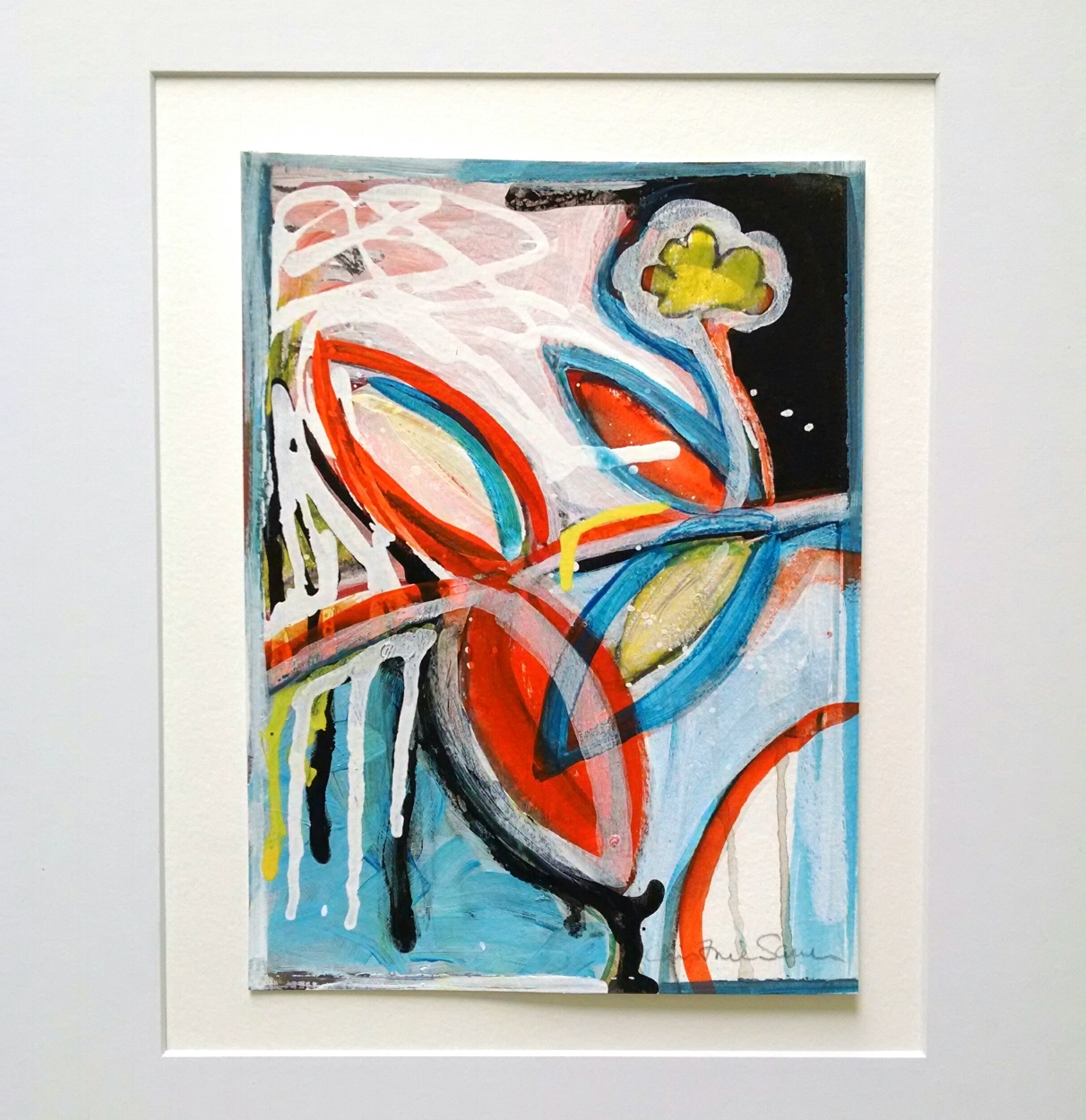The parade of paintings on my work table are lined up for next steps in the mounting process (above). For the last several weeks I've been working on this project. The pile of small works on paper has been growing steadily over the last couple of years. It's impossible to keep up with uploading them to the website. Presenting them framed is cost prohibitive but I wanted a way to present at least some of them rather than being filed in a drawer for an occaisional viewing. The idea to mount them to cradled panels came about during an exchange about this dilemma with an artist on Instagram. After auditioning several paintings that would work for this kind of presentation I created a small test piece with the palm sized painting below. I love the way it turned out! More of these may go on the to-do list!
The cradled basswood panels were prepped with GAC 100 and then gesso. Mounting the larger 9x12" and 11x14" paintings went well. I used a thick application of GOLDEN's Soft Gel Matte, slathering it on with a palette knife like frosting a cake. The paintings dried perfectly flat! It was amazing considering that several pieces have collage and various types of acrylic paint on them which makes the surfaces uneven and some of the papers were buckled a bit. The sides are in process of being painted. There was an overstock sale at Jerry's Artarama on Ampersand Floater Frames for the 11x14" size so I purchased several to try out. Looking forward to putting those together.
Christine Sauer "Luminous" 11x14" acrylic and graphite on paper on cradled panel
This mounting process not only solved a problem but has also inspired many other ideas for other paintings and collages that i look forward to exploring soon. If you are interested in more specific information about mounting art to panel or are interested in purchasing a piece please email me christinesauer@christinesauerstudio.space.
Christine Sauer, "Collection:Bundles" 11x14", acrylic, collage and Inktense pencils on paper on panel




















